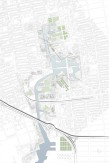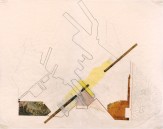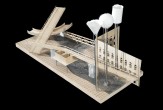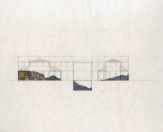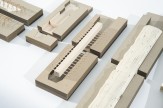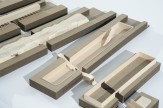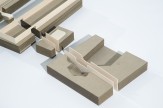Selected Undergraduate Design Studio Projects--Design IV, Fall 2012
Fall 2012
Professors Susannah Drake, Sean Sculley & Lydia Xynogala
Nature of Urbanity: A Sense of Place, a Sense of Time, a Course of Action
This studio takes its name from the 1994 compilation of essays by John Brinkerhoff Jackson entitled “A Sense of Place, a Sense of Time.” Jackson posits that in our ever evolving urban, industrial and post-industrial environments there is an increased importance of ritual, routine, and schedule over the creation of more permanent place making. This idea, while somewhat reductive, is useful because it calls in to question the nature of urbanity.
At a time when the impacts of climate change necessitate a radical rethinking of the role of landscape ecology and infrastructure within the city, the qualities of human experience cannot be lost. Historically cities developed as places of commerce, removed from their agrarian surroundings where goods and services were exchanged. Location related to power, protection and resources. Geography played a critical role in the site, spatial definition and form of cities.The studio is an introduction to the relationship between urban design and the larger scale landscape systems that shaped them. Truly interdisciplinary design thinking requires consideration of the nuances of how scale and operation impact process, product and experience. Architecture, landscape architecture and urban design disciplines may suggest particular formal and material characteristics. Regional geography defined by physical characteristics such as topography, climate, soils, water flow, bathymetry, geology developed over thousands (in some cases millions) of years. An urban transportation system or economic development plan may suggest a logic to maximize efficiency in movement of people and goods. At the scale of a building, the mediation between the social and physical context that occurs through form, space and materials can define human experience.
The studio explores opportunities to transform the experience of the city by rethinking how increased climate change impacts might help us design a reflexive urban design strategy that reflects cultural, economic, political, formal, and ecological forces. The New York City Commissioners Plan of 1811 was radical in it’s rethinking of the nature of the city: it was designed to maximize efficiency in economic and traditional urban terms. Perhaps we can consider an equivalent rethinking of the nature of the city in the age of climate change.

